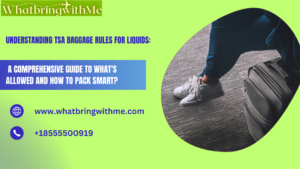In the ever-evolving world of international travel, understanding baggage restrictions is crucial for a smooth journey. With each airline and country enforcing unique rules and regulations, travelers often find themselves facing unexpected challenges. This guide aims to demystify international flight baggage restrictions, providing practical advice and insights to help you avoid common pitfalls.
Standard Allowances for Carry-On and Checked Luggage
When preparing for an international flight, knowing the standard baggage allowances can save time and money. Typically, airlines allow one carry-on bag and one personal item, such as a handbag or laptop bag. The carry-on bag usually has a size limit of 22 x 14 x 9 inches and a weight limit ranging from 15 to 22 pounds, depending on the airline.
Checked luggage allowances vary more significantly. Economy class passengers are generally permitted one or two bags, each weighing no more than 50 pounds (23 kg). Business and first-class passengers often enjoy higher allowances, with some airlines allowing up to three bags at 70 pounds (32 kg) each.
Common Weight and Size Restrictions
Understanding weight and size restrictions for both carry-on and checked luggage is essential to avoid additional fees. While carry-on dimensions are relatively uniform, checked baggage restrictions can differ. Most airlines impose a maximum linear dimension (length + width + height) of 62 inches (158 cm) for checked bags.
Exceeding weight or size limits can result in hefty fees. For instance, an overweight bag can incur charges ranging from $50 to $200, depending on the airline and the degree of excess weight. Oversized bags can also attract similar fees.
Overview of Additional Fees for Excess Baggage
Airlines are known for their stringent policies on excess baggage. Fees for extra bags, overweight bags, and oversized bags can quickly add up. It’s essential to check your airline’s specific policies ahead of time. Some airlines offer prepaid baggage options at a discount compared to fees paid at the airport.
Airline-Specific Policies
Airline-specific policies vary widely and can significantly impact your travel experience. Each airline sets its own rules for the size, weight, and number of bags allowed. For example, some airlines may include one or two checked bags in the ticket price, while others charge extra for each bag. Additionally, weight limits for checked and carry-on luggage can differ, affecting how you pack. Familiarizing yourself with the specific policies of the airline you’re flying with is essential to avoid unexpected fees and ensure a smoother journey.
Comparison of Baggage Policies Among Major International Airlines
Each airline has its baggage policies, which can confuse travelers. Here’s a comparison of some major international airlines:
- Delta Air Lines
- Carry-On: One bag plus one personal item
- Checked Baggage: Fees vary; typically $30 for the first bag, $40 for the second (within the USA)
- Overweight Fees: $100-$200, depending on the weight
- Emirates
- Carry-On: One bag (up to 15 pounds) plus a laptop bag or handbag
- Checked Baggage: Economy class passengers can check one or two bags (50 pounds each), depending on the fare type
- Overweight Fees: Varies by route; generally $15-$50 per kilogram
- Lufthansa
- Carry-On: One bag (up to 17 pounds) plus one personal item
- Checked Baggage: Economy class typically allows one bag (50 pounds); premium classes have higher allowances
- Overweight Fees: €50-€100, depending on the weight and route.
Highlights of Lenient Versus Strict Airlines
Some airlines are known for their lenient baggage policies, while others are notoriously strict. For example, Southwest Airlines allows two free checked bags for domestic and international flights, making it a popular choice for travelers with lots of luggage. On the other hand, budget airlines like Ryanair and Spirit Airlines are very strict, often charging high fees for even slightly overweight or oversized bags.
Country-Specific Restrictions
- Examples of Countries with Unique or Strict Baggage Rules
Different countries have varying regulations concerning what can and cannot be brought into the country. Here are some notable examples:
- Australia
Australia is stringent about biosecurity. Items like food, plants, and animal products must be declared upon arrival. Failure to declare can result in hefty fines or prosecution. Passengers are advised to check the Australian Department of Agriculture’s guidelines before packing.
- USA
The Transportation Security Administration (TSA) in the USA has strict regulations on liquids, gels, and aerosols in carry-on baggage. Each item must be in a 3.4-ounce (100 ml) or smaller container and all items must fit within a single quart-sized, clear, resealable plastic bag. Additionally, certain items like firearms, sharp objects, and hazardous materials are prohibited in carry-on luggage.
- Japan
Japan has specific regulations concerning medications. Travelers should carry prescriptions and ensure medications are in their original packaging. Certain over-the-counter medications available in other countries, such as those containing pseudoephedrine, are banned in Japan.
- Prohibited Items and Customs Regulations
Customs regulations often include restrictions on items like:
- Food and Agriculture Products: Many countries restrict the importation of fresh fruits, vegetables, and meats.
- Cultural Artifacts: Some countries have strict regulations regarding the export of cultural artifacts or antiques.
- Medication: As mentioned, medication regulations vary, and some countries have stringent rules on what can be brought in without proper documentation.
Special Items and Equipment
- Guidelines for Traveling with Sports Equipment, Musical Instruments, and Medical Supplies
Traveling with special items requires extra preparation. Here’s a breakdown of guidelines for various types of special equipment:
- Sports Equipment
- Bicycles: Must often be packed in a specific type of bag or box. Airlines may charge an oversized baggage fee.
- Golf Clubs: Usually treated as standard checked baggage, but overweight fees may apply.
- Ski/Snowboard Gear: Many airlines allow one ski bag and one boot bag to be counted as one checked item.
- Musical Instruments
- Carry-On: Small instruments like violins or flutes can often be carried on, provided they fit in the overhead bin or under the seat.
- Checked: Larger instruments like cellos may require a special arrangement, and airlines often recommend purchasing an extra seat for the instrument to ensure its safety.
- Medical Supplies
- Medications: Always carry a doctor’s note or prescription and keep medications in their original packaging.
- Medical Equipment: Items like CPAP machines are usually allowed as carry-on and do not count towards your baggage allowance, but it’s wise to inform the airline in advance.
- Policies on Transporting Pets
- Transporting pets internationally involves meeting specific airline and destination country regulations. Here are key points to consider:
- Carrier Requirements: Airlines have specific requirements for pet carriers, including size, ventilation, and security.
- Health Certificates: Most countries require a health certificate from a veterinarian, confirming the pet is healthy and has received necessary vaccinations.
- Quarantine: Some destinations impose a quarantine period for pets. Research the destination’s policies well in advance.
- Transporting pets internationally involves meeting specific airline and destination country regulations. Here are key points to consider:
Tips for Packing Efficiently
- Strategies to Minimize Baggage Weight and Size
Efficient packing can save money and hassle. Here are some strategies:
- Use Compression Bags: These can reduce the volume of clothes, allowing you to fit more into your suitcase.
- Roll Your Clothes: Rolling instead of folding clothes can save space and reduce wrinkles.
- Pack Versatile Clothing: Choose items that can be mixed and matched to create multiple outfits.
- Using Packing Aids Like Compression Bags and Digital Scales
Investing in packing aids can help you stay within weight and size limits:
- Compression Bags: Great for reducing the volume of bulky items like jackets and sweaters.
- Digital Scales: A portable luggage scale can help you weigh your bags before you leave for the airport, avoiding surprises at check-in.
Handling Baggage Issues
- What to Do If Your Baggage is Lost or Delayed
Lost or delayed baggage is a common travel issue. Here’s what to do:
- Report Immediately: Report the issue to the airline’s baggage service office at the airport.
- Keep Receipts: Retain all receipts for any essential items purchased while your bag is missing, as airlines often reimburse these expenses.
- Follow Up: Stay in touch with the airline and follow up regularly until your baggage is returned.
- Tips for Filing Claims and Seeking Compensation
If your baggage is lost or damaged, you may be entitled to compensation:
- Document Everything: Keep detailed records of the incident, including your baggage claim number and any communications with the airline.
- Understand Your Rights: Familiarize yourself with the airline’s compensation policy and relevant international regulations, such as the Montreal Convention.
- Submit a Claim: File a claim with the airline as soon as possible, providing all necessary documentation.
Recent Changes and Trends
- How COVID-19 Has Impacted Baggage Policies
The COVID-19 pandemic has led to several changes in baggage policies:
- Increased Hygiene Measures: Airlines have implemented enhanced cleaning protocols for checked baggage.
- Temporary Restrictions: Some airlines temporarily reduced baggage allowances or changed carry-on policies to limit contact.
- Flexible Policies: Many airlines have introduced more flexible booking policies, including the ability to modify baggage allowances without fees.
- Future Trends in International Baggage Restrictions
Looking ahead, several trends may shape the future of international baggage policies:
- Sustainability: Airlines are increasingly focusing on sustainability, which may lead to changes in baggage policies to reduce fuel consumption and emissions.
- Technology: The use of technology, such as RFID tags and mobile apps, is likely to improve baggage tracking and reduce the incidence of lost luggage.
- Personalization: Airlines may offer more personalized baggage options, allowing passengers to choose the services that best meet their needs.
Also Read: Understanding Emirates Airline Baggage Allowance: Policies, Tips, and Recent Updates for 2024
Conclusion
Navigating international flight baggage restrictions can be challenging, but with the right knowledge and preparation, you can avoid common pitfalls. By understanding airline-specific policies, country-specific restrictions, and tips for efficient packing, you can ensure a smoother travel experience. Stay informed about recent changes and future trends to adapt to evolving regulations, and always be prepared to handle any baggage issues that may arise.
FAQs:
Q1. What is the standard carry-on baggage allowance for international flights?
Ans: Most airlines allow passengers to bring one carry-on bag and one personal item, such as a handbag or laptop bag. The carry-on bag typically must not exceed 22 x 14 x 9 inches in size and should weigh between 15 to 22 pounds, depending on the airline’s specific policies.
Q2. How can I find out the baggage allowance for my specific flight?
Ans: To find out the baggage allowance for your specific flight, visit your airline’s website or check your booking confirmation. Most airlines provide detailed information on their baggage policies, including size, weight limits, and any applicable fees for checked and carry-on luggage.
Q3. What items are prohibited in carry-on luggage for international flights?
Ans: Prohibited items in carry-on luggage generally include sharp objects, flammable liquids, and explosives. Additionally, there are restrictions on liquids, gels, and aerosols, which must be in containers of 3.4 ounces (100 ml) or less and fit into a single quart-sized plastic bag. Always check your airline’s specific list of prohibited items.
Q4. Are there additional fees for overweight or oversized baggage?
Ans: Yes, airlines typically charge additional fees for baggage that exceeds their weight or size limits. These fees can vary widely depending on the airline and the degree to which the baggage exceeds the allowed limits. It is advisable to check the specific fees on your airline’s website before traveling.
Q5. Can I carry sports equipment or musical instruments on international flights?
Ans: Most airlines allow passengers to carry sports equipment and musical instruments, but these items are often subject to specific rules and additional fees. For example, larger items like bicycles or cellos may need to be checked as oversized baggage or even require a separate ticket for an additional seat. It’s best to review your airline’s policies regarding special items before your flight.


